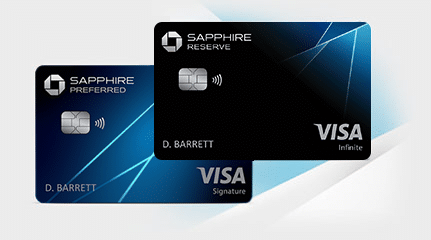Anúncios
In today’s world, secure transactions are super important. More businesses operate online and need to keep data safe. This article covers key tips and practices to protect transactions. By learning about security and using smart strategies, businesses can keep their money safe and earn customer trust.

Chase Sapphire Preferred® Card

Understanding Secure Transactions and Their Importance
In today’s world, knowing about secure transactions is a must for businesses and consumers. These transactions use advanced systems to protect your financial info online. Keeping the data safe, real, and private is crucial as online payments grow more common.
Anúncios
Defining Secure Transactions
Secure transactions help keep sensitive details safe, making sure info is private and unchanged. They use encryption and ways to check who is involved in the transaction. This reduces the chance of fraud and data theft.
Anúncios
The Role of Technology in Secure Transactions
Technology plays a big part in making transactions safe. It uses encryption to hide data and tokenization to swap info with a unique code. Adding multi-factor authentication further secures access. Following rules like PCI DSS is essential for maintaining security and fighting off threats.

Key Threats to Secure Transactions
Today, the digital world is facing various threats that make transactions risky. It’s crucial for both businesses and consumers to understand these dangers. Threats like phishing attacks, data breaches, and card skimming are big issues. Knowing about them helps us stay careful and safe from online scams.
Phishing Attacks
Phishing is when scammers pretend to be trusted entities to get your private info. They use emails or fake websites that seem real. By tricking us, they can steal personal data or money. Learning how to spot these tricks can really cut down on their success.
Data Breaches and Hacks
Unauthorized access to private data, called data breaches, impact both businesses and people. Weak security or system flaws let hackers in to take sensitive info. This leads to money loss, legal trouble, and a bad reputation. It’s vital for companies to have strong security to protect us and our data.
Card Skimming
Card skimming means thieves use devices to get your card data at ATMs or stores. You might not notice, but using a tampered machine can lead to stolen identity or money loss. Skimmers are hard to see, so we must check where we swipe our cards. Adding security steps can lower the chances of skimming dangers.
Best Practices for Secure Transactions
Organizations need strong strategies to keep sensitive info safe during financial transactions. Focusing on best practices helps enhance security. These include following PCI DSS rules, setting up strict access control, and training staff regularly.
Maintaining PCI DSS Compliance
It’s vital for organizations working with cardholder data to stick to PCI DSS standards. This helps protect card info and fight fraud. Regular checks make sure practices are up to the mark, boosting customer trust and safety.
Implementing Strong Access Controls
Strong access control stops unapproved access to sensitive data. It’s key to have several security levels, lowering data breach risks. Using role-based access makes these controls even stronger.
Regular Security Training for Employees
Training employees often is essential for a secure workplace. It teaches them about threats and important security steps, making them more aware. Keeping training up-to-date reduces human mistakes.
Utilizing Encryption for Secure Transactions
Encryption is key to keeping data safe when it’s sent online. It makes sure private info stays private between the sender and receiver. By using encryption, companies can stop hackers and keep data safe. Knowing about encryption and how TLS works is vital for keeping online transactions secure.
Types of Encryption: Symmetric vs. Asymmetric
There are two main kinds of encryption:
- Symmetric Encryption: This method uses one key for both encrypting and decrypting data. It’s quick and efficient. However, the tough part is making sure the key is shared safely.
- Asymmetric Encryption: Here, two keys are used—a public key for encrypting and a private key for decrypting. It’s safer since the private key doesn’t need to be shared. This makes it very popular among organizations.
Importance of TLS for Data Transmission
TLS is essential for secure data sending over the internet. It offers major benefits:
- Confidentiality: TLS keeps data encrypted during transfer, so only the intended receiver can read it.
- Integrity: It checks that the data hasn’t been changed while being sent, ensuring it’s not tampered with.
- Authentication: TLS also checks that the people exchanging data are who they say they are, which reduces cyberattack risks.
Tokenization: A Step Towards Secure Transactions
Tokenization replaces sensitive payment data with unique tokens, enhancing financial security. These tokens have no real value. They lower the risks of data breaches, protecting sensitive info in electronic transactions.
Understanding Tokenization
Tokenization is key for protecting sensitive data. It turns this data into tokens that are safe if stolen. This way, credit card numbers and personal info are kept safe from fraudsters.
How Tokenization Protects Sensitive Data
Tokenization makes business security stronger. It keeps original data safe, lowering hacking risks. If tokens are stolen, they’re useless to thieves. This method ensures financial safety and meets strict data protection laws.
Multi-Factor Authentication: Enhancing Security
Multi-Factor Authentication (MFA) boosts security by needing several kinds of proof before access is granted. It requires at least two types: something you know (like a password), something you have (a security token), or something unique to your body (like a fingerprint). By doing this, MFA greatly lowers the chance of someone getting in without permission.
What is Multi-Factor Authentication?
MFA makes security much stronger because users need to show different kinds of proof to get in. This makes it tough for hackers to break in. The mix of checks ensures that even if a hacker gets one proof, the other defenses still protect the data.
Benefits of Implementing MFA
- Significantly decreases the risk of unauthorized access.
- Enhances protection against phishing and other social engineering attacks.
- Increases user confidence in transaction security.
- Facilitates compliance with industry regulations and standards.
Adding MFA to your security means not only better protection, but also builds trust with users. In times when data breaches are all too common, using MFA is key for any group wanting to protect its online info.
Monitoring Transactions for Early Detection of Fraud
Today’s digital world demands strong transaction monitoring. Real-time methods are now key in spotting fraud early. They help businesses protect themselves by carefully checking transaction data.
Real-Time Transaction Monitoring Systems
These systems look at payment data right as transactions happen. They compare new data with past patterns to find anything odd. This way, companies can act fast to stop fraud and cut losses.
Identifying Suspicious Activity and Patterns
Spotting fishy activities means looking at the size, frequency, and where transactions happen. Advanced algorithms spot weird patterns, signaling them for a closer look. This helps keep the financial environment safe and secures customer interests.
The Role of Secure Payment Methods
In today’s world, it’s vital to pick safe ways to pay online for both shoppers and sellers. There are many ways to pay online, and each has its own security perks. From card payments to bank transfers and even digital wallets, each method has special features to keep transactions safe.
Comparing Different Online Payment Methods
It’s important to look at how secure different online payment options are:
- Credit and Debit Cards: These payments use encryption and watch for fraud, but they can still be hacked through skimming and phishing.
- Bank Transfers: They’re secure because they use direct bank links, but might not catch fraud as fast as other platforms.
- Digital Wallets: Options like PayPal, Apple Pay, and Google Pay protect your info by using a process called tokenization, making them very secure.
The Security of Digital Wallets
Digital wallets are top-notch in security. They often ask for multi-factor authentication, adding more safety. This way, even if your device gets hacked, thieves can’t easily make unauthorized purchases. As more companies start using digital wallets, picking secure online payment methods is key to keeping customer data safe.
Legal Compliance and Secure Transactions
Making sure legal rules are followed is key for safe transactions. Laws like GDPR and PCI DSS protect customer info. These rules guide companies on how to keep data safe.
Understanding Regulatory Standards
Standards help keep personal info safe during transactions. They mean tough steps like data encryption and secure access need to be taken. It’s crucial for companies to keep up with these standards.
Pursuing GDPR and PCI DSS Compliance
GDPR and PCI DSS are important for handling sensitive data. GDPR focuses on privacy, while PCI DSS deals with payment information. Following both makes transactions safer and builds customer trust.
Building a Culture of Security within Organizations
Building a strong security culture within an organization is key to protecting sensitive information. It starts with teaching everyone about the importance of security, their role in stopping breaches, and daily best practices. Security policies are also vital as they give clear rules for everyone to follow. These actions work together to keep the organization safe.
Employee Training Programs
Good employee training is the base of a strong security culture. Training should cover several important areas:
- Intro to common security threats and weak spots.
- How to handle sensitive information properly.
- How to spot phishing or scams.
Regular training keeps staff up-to-date and makes them feel responsible for keeping things secure.
Establishing Security Policies and Protocols
Setting clear security rules is crucial for a unified security approach in the organization. These protocols should include:
- Ways to control who sees what data.
- Rules for making and using passwords.
- How to report security problems fast.
With these rules, organizations can make sure everyone knows how to stay safe. This reduces security risks.
Conclusion
In summary, keeping transactions safe is key to building trust in the digital world we live in. It’s important to have a plan that includes good habits, the latest tech, and a focus on safety at work.
Companies need to always be alert to new risks. They should check their systems often and follow rules that apply to them. Using tools like tokenization, encrypting data, and requiring multiple proofs of identity helps keep info safe.
Creating a safe space for transactions does more than protect data. It builds trust in what services offer. Since keeping financial information safe is very important, using these methods helps businesses succeed online.
FAQ
What are secure transactions?
Why is security important for online transactions?
What technologies enhance the security of transactions?
What are common threats to secure transactions?
How can organizations maintain compliance with PCI DSS?
What role does encryption play in secure transactions?
Can you explain tokenization?
What is multi-factor authentication (MFA) and its importance?
How does real-time transaction monitoring help in fraud prevention?
What are the security advantages of digital wallets?
Why is legal compliance essential in secure transactions?
How can organizations create a culture of security?
Conteúdo criado com auxílio de Inteligência Artificial


